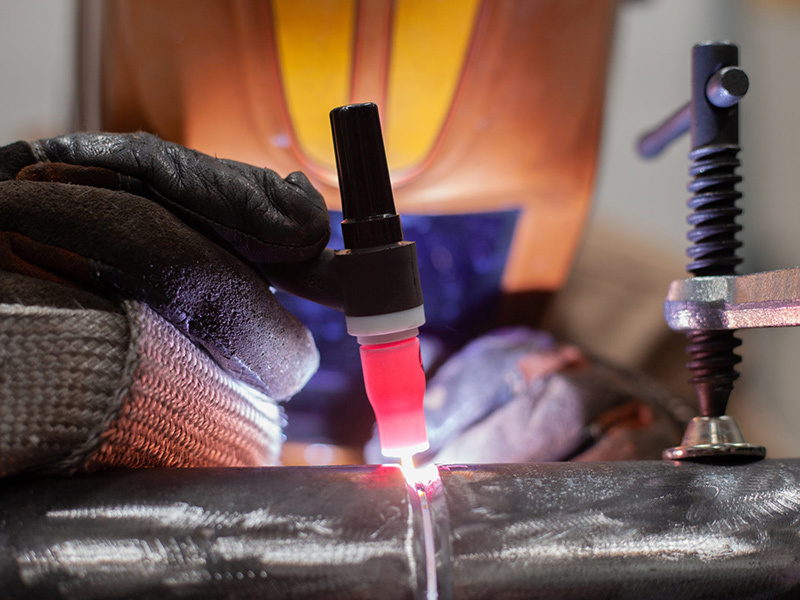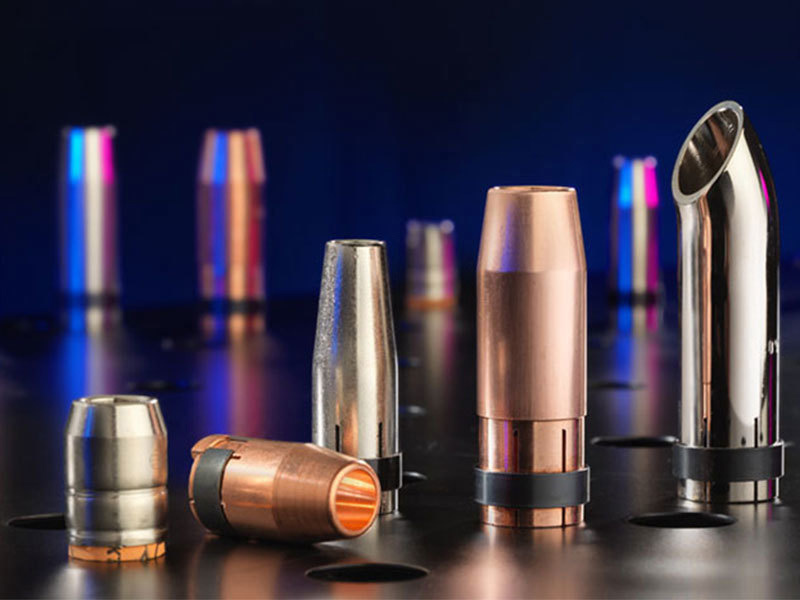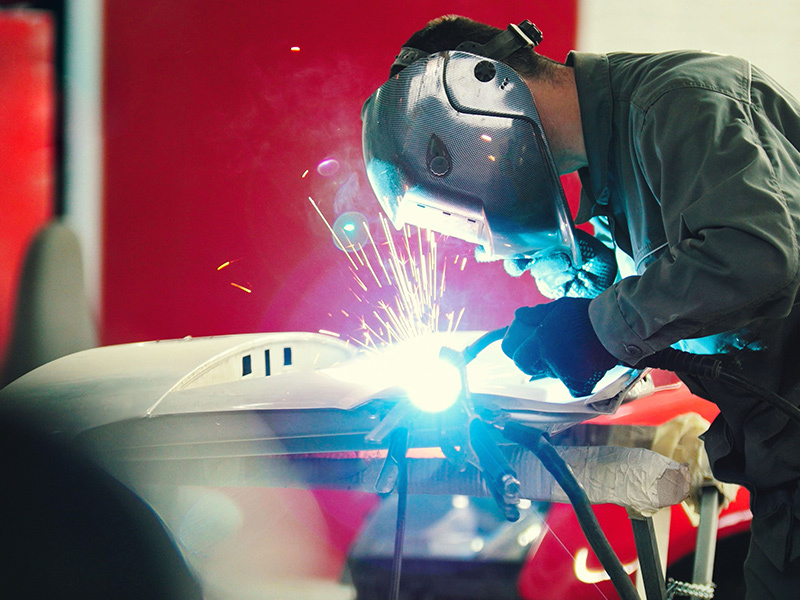Unlocking Precision: The Essential Guide to MIG Welding Torches
Mar 17,2025

Unlocking Precision: The Essential Guide to MIG Welding Torches
MIG welding, or Metal Inert Gas welding, is a widely used welding technique that offers versatility, speed, and ease of use. Central to this process is the MIG welding torch, a critical tool that ensures precision and quality in welding projects. In this guide, we delve deep into the world of MIG welding torches, exploring their types, components, selection criteria, and maintenance tips. Our goal is to equip you with the knowledge necessary to enhance your welding skills and achieve outstanding results.
Table of Contents
1. Understanding MIG Welding Torches
2. Components of a MIG Welding Torch
3. Types of MIG Welding Torches
4. How to Choose the Right MIG Welding Torch
5. Operating a MIG Welding Torch
6. Maintenance Tips for MIG Welding Torches
7. Safety Practices When Using MIG Welding Torches
8. Frequently Asked Questions
1. Understanding MIG Welding Torches
The MIG welding torch serves as the primary interface between the welder and the welding process. It consists of several components that work in harmony to deliver a precise welding arc. MIG welding is known for its ability to weld a variety of metals, including steel, stainless steel, and aluminum, making it a preferred choice in industries ranging from automotive to construction.
At its core, the MIG welding torch feeds a continuous solid wire electrode that melts and fuses the base materials together. In addition to the wire, an inert gas is typically used to shield the weld from contamination, ensuring a clean and strong joint. The efficiency and effectiveness of the welding process largely depend on the quality and type of the torch used.
2. Components of a MIG Welding Torch
Understanding the components of a MIG welding torch is essential for effective operation and maintenance. The primary components include:
Handle
The handle is the part of the torch that the welder grips. It is ergonomically designed for comfort and control, allowing the welder to maneuver the torch easily.
Trigger
The trigger activates the wire feed and gas flow. A responsive trigger is crucial for precise control over the welding arc.
Contact Tip
The contact tip is where the welding wire exits the torch. It plays a vital role in the arc formation and must be matched to the wire diameter for optimal performance.
Gas Diffuser
The gas diffuser ensures even distribution of the shielding gas around the weld area, protecting the molten metal from atmospheric contamination.
Insulator
The insulator separates the electrical components from the handle, providing safety and preventing electrical shocks.
Neck
The neck connects the handle to the contact tip and comes in various lengths and angles to accommodate different welding positions and access needs.
Welding Wire
While not part of the torch itself, the welding wire is a critical component as it is fed through the torch and melted to create the weld.
3. Types of MIG Welding Torches
MIG welding torches come in various styles and configurations, each designed for specific applications. Understanding these types can help you select the right torch for your needs.
Air-Cooled Torches
Air-cooled torches are lightweight and ideal for light to medium-duty welding tasks. They rely on ambient air to cool the components and are commonly used in DIY projects and light fabrication work.
Water-Cooled Torches
Water-cooled torches are designed for heavy-duty applications where prolonged welding is required. They utilize water to dissipate heat, allowing for extended use without overheating. These torches are often found in industrial settings.
Push-Pull Torches
Push-pull torches are equipped with dual feeding mechanisms that push and pull the wire, reducing friction and preventing bird-nesting. This type is particularly useful for welding aluminum or other soft materials.
Multi-Process Torches
Multi-process torches are versatile tools that can be used for MIG, TIG, and stick welding. They offer flexibility for welders who perform different types of welding tasks.
4. How to Choose the Right MIG Welding Torch
Selecting the right MIG welding torch is crucial for achieving optimal results in your welding projects. Here are key factors to consider:
Welding Thickness
Consider the thickness of the materials you will be welding. Thicker materials may require a more powerful torch with a larger contact tip.
Type of Material
Different materials may require specific types of torches. For instance, aluminum welding often benefits from a push-pull torch, while standard steel welding can be done with air-cooled options.
Welding Environment
Your welding environment can influence your choice. If you're welding indoors, an air-cooled torch may suffice, but for outdoor use or in high-temperature settings, a water-cooled torch could be more effective.
Desired Weld Quality
Assess the quality of the weld required for your project. Higher-quality welds may necessitate more advanced torch features.
Budget
Finally, consider your budget. While high-end torches offer additional features, there are many affordable options that can deliver satisfactory results for beginners and hobbyists.
5. Operating a MIG Welding Torch
Operating a MIG welding torch requires skill and practice. Here are the essential steps to follow:
Preparation
Before you begin welding, ensure that your work area is clean and free of flammable materials. Wear appropriate personal protective equipment, including gloves, a welding helmet, and protective clothing.
Setting Up the Torch
Attach the appropriate contact tip and gas diffuser to the torch. Ensure that the welding wire is correctly loaded and that the gas supply is connected and turned on.
Adjusting Settings
Set the voltage and wire feed speed according to the material's thickness and type. These settings are crucial for achieving a stable arc and preventing burn-through.
Welding Technique
Hold the torch at a consistent angle and distance from the workpiece. Begin welding by pulling the trigger and moving the torch steadily along the joint. Practice different movements, such as weaving or stringer beads, to achieve various weld beads.
6. Maintenance Tips for MIG Welding Torches
Proper maintenance of your MIG welding torch will ensure longevity and performance. Here are some essential maintenance tips:
Regular Inspections
Inspect the torch regularly for wear and tear. Check the contact tip, gas diffuser, and other components for signs of damage or buildup.
Cleaning
Clean the contact tip and nozzle regularly to prevent spatter buildup. Use a soft brush or dedicated cleaning tools designed for this purpose.
Replacement Parts
Replace worn or damaged parts promptly. Using a faulty torch can lead to poor weld quality and safety hazards.
Gas Supply Checks
Ensure that the shielding gas supply is always adequate. Low gas levels can lead to contamination and poor weld quality.
7. Safety Practices When Using MIG Welding Torches
Safety is paramount when working with MIG welding torches. Follow these safety practices to protect yourself and others:
Personal Protective Equipment (PPE)
Always wear appropriate PPE, including a welding helmet with the correct shade, gloves, and protective clothing. This equipment protects against sparks, heat, and UV radiation.
Ventilation
Ensure that your workspace is well-ventilated to prevent the accumulation of harmful fumes and gases. Use exhaust fans or work outdoors whenever possible.
Fire Safety
Keep a fire extinguisher nearby and ensure that flammable materials are removed from the immediate area. Always be aware of your surroundings while welding.
Electrical Safety
Check all electrical connections for damage and ensure that portable welders are grounded properly. Avoid using damaged equipment.
8. Frequently Asked Questions
What is the best MIG welding torch for beginners?
For beginners, an air-cooled MIG welding torch with a basic setup is often the best choice. It is lightweight and user-friendly, making it easier to learn welding techniques.
How often should I replace the contact tip?
The contact tip should be replaced when it shows signs of wear, such as increasing spatter or inconsistent arc performance. Regular maintenance and inspections can help determine the right timing for replacement.
Can I use a MIG welding torch for TIG welding?
While some multi-process torches can handle both MIG and TIG welding, using a dedicated TIG torch is recommended for optimal results when performing TIG welding.
What type of shielding gas should I use for MIG welding?
The most common shielding gas for MIG welding is a mix of argon and carbon dioxide, typically in a ratio of 75% argon to 25% CO2. This mixture offers good penetration and a stable arc.
How do I troubleshoot a MIG welding torch that won’t feed wire?
If the welding wire isn't feeding, check for kinks or bends in the wire, ensure that the drive rolls are properly adjusted, and inspect the liner for blockages. Cleaning and maintenance are essential in preventing these issues.
Conclusion
MIG welding torches are essential tools that significantly impact the quality and precision of welding projects. By understanding their components, types, and maintenance, you can enhance your welding skills and achieve superior results. For both beginners and experienced welders, investing time in learning about MIG welding torches will pay off in the form of cleaner, stronger welds and a safer working environment. Armed with this knowledge, you are now better prepared to tackle your welding projects with confidence and precision.
TAG:
Related Posts
CO2 Welding Torch Material: A Comprehensive Guide to Enhance Your Welding Skills




